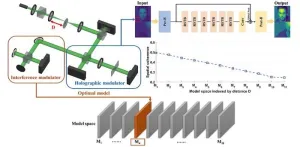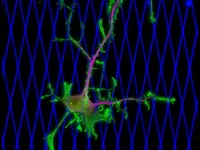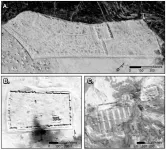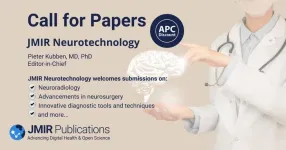How do animals know it’s lunchtime?
Scientists discover molecular pathways that fix mealtimes and how they sync to days
2023-10-28
(Press-News.org) Tokyo, Japan – Researchers from Tokyo Metropolitan University have used fruit flies to study how daily eating patterns are regulated. They found that the quasimodo (qsm) gene helped sync feeding to light/dark cycles, but not in constant darkness: instead, the genes clock (clk) and cycle (cyc) keep eating/fasting cycles, while other “clocks” in nerve cells help sync it to days. Deciphering the molecular mechanism behind eating cycles helps us understand animal behavior, including our own.
Many members of the animal kingdom eat at roughly the same times each day. This is born out of the need to adapt to aspects of the environment, including how much light there is, temperature, the availability of food, the chance that predators are around, all of which are vital for survival. It is also important for efficient digestion and metabolism, thus for our general wellbeing.
But how do such a wide range of organisms know when to eat? An important factor is circadian rhythm, an approximately daily physiological cycle shared by organisms as diverse as animals, plants, bacteria and algae. It serves as a “master clock” which regulates rhythmic behavior. But animals are full of other timing mechanisms, known as “peripheral clocks,” each with its own different biochemical pathways. These can be reset by external factors, such as feeding. But the specific way in which these clocks govern animal feeding behavior is not yet clear.
Now a team led by Associate Professor Kanae Ando of Tokyo Metropolitan University have addressed this problem using fruit flies, a model organism that mirrors many of the features of more complex animals, including humans. They used a method known as a CAFE assay, where flies are fed through a microcapillary to measure exactly how much individual flies eat at different times. Firstly, they looked at how flies synced their eating habits to light. Studying flies feeding in a light/dark cycle, previous work already showed that flies feed more during the daytime even when mutations were introduced to core circadian clock genes, period (per) and timeless (tim). Instead, the team looked at quasimodo (qsm), a gene that encodes for a light-responsive protein that controls the firing of clock neurons. By knocking down qsm, they found that flies had their daytime feeding pattern significantly affected. For the first time, we know that the syncing of feeding to a light-mediated rhythm is affected by qsm.
This was not the case for flies feeding in constant darkness. Flies with mutations in their core circadian clock genes suffered severe disruption to their daily feeding patterns. Of the four genes involved, period (per), timeless (tim), cycle (cyc) and clock (clk), loss of cyc and clk was far more severe. In fact, it was found that clk/cyc was necessary in creating bimodal feeding patterns i.e. eating and fasting periods, particularly those in metabolic tissues. But how did these cycles sync up with days? Instead of metabolic tissues, molecular clock genes in the nerve cells played the dominant role.
The team’s discoveries give us a first glimpse into how different clocks in different parts of an organism regulate feeding/fasting cycles as well as how they match up with diurnal rhythms. An understanding of the mechanisms behind feeding habits promises new insights into animal behavior, as well as novel treatments for eating disorders.
This work was supported by the Farber Institute for Neurosciences and Thomas Jefferson University, the National Institutes of Health [R01AG032279-A1], a Takeda Foundation Grant, and the TMU Strategic Research Fund.
END
[Attachments] See images for this press release:

ELSE PRESS RELEASES FROM THIS DATE:
2023-10-27
Experts in the Texas A&M University Department of Geography are teaming up with civil and chemical engineers and water resource, disaster recovery and public health researchers across the campus in a collaborative effort to better safeguard Texas Gulf Coast communities against climate-related emergencies, fueled by a three-year, $1.5 million grant from the National Academies Gulf Research Program (GRP).
The project, titled "Climate-LEAD: Climate Effects on Localized Environmental Health Disparities in Overburdened Texas Communities along Gulf Coast," is ...
2023-10-27
Cedars-Sinai Cancer investigators have found that Black men respond as well as white men to systemic therapies for advanced prostate cancer when access to quality healthcare is equal, regardless of socioeconomic status. Their study, published today in the peer-reviewed Journal of Clinical Oncology, counters previous research suggesting that Black men receiving these therapies—which include hormone therapy, chemotherapy and immunotherapy—fare worse than white men do.
“We believe this is the most comprehensive look at this issue to date, and our findings suggest that, under the right conditions, Black men with metastatic ...
2023-10-27
University of Maryland researchers studying how lithium batteries fail have developed a new technology that could enable next-generation electric vehicles (EVs) and other devices that are less prone to battery fires while increasing energy storage.
The innovative method, presented in a paper published Wednesday in the journal Nature, suppresses the growth of lithium dendrites—damaging branch-like structures that develop inside so-called all-solid-state lithium batteries, preventing firms from broadly commercializing the promising technology. But this new design for a battery “interlayer,” led by Department of Chemical and Biomolecular Engineering ...
2023-10-27
Holographic imaging has always been challenged by unpredictable distortions in dynamic environments. Traditional deep learning methods often struggle to adapt to diverse scenes due to their reliance on specific data conditions.
To tackle this problem, researchers at Zhejiang University delved into the intersection of optics and deep learning, uncovering the key role of physical priors in ensuring the alignment of data and pre-trained models. They explored the impact of spatial coherence and turbulence on holographic ...
2023-10-27
DALLAS, October 27, 2023 — Approximately 50 million people in the United States are at higher risk for heart disease and/or stroke because they lack the most basic needs — healthy food, clean air and drinking water, quality education, employment, housing and access to health care. Historically, people of color -- including Black and Hispanic/Latino people, are at even higher risk of cardiovascular disease (CVD) for these same reasons. Through the American Heart Association’s 2023 EmPOWERED to Serve Business Accelerator™, three local social entrepreneurs ...
2023-10-27
UNIVERSITY PARK, Pa. — The most lethal feature of any cancer is metastasis, the spread of cancer cells throughout the body. New research led by Penn State reveals for the first time the mechanics behind how breast cancer cells may invade healthy tissues. The discovery, showing that a motor protein called dynein powers the movement of cancer cells in soft tissue models, offers new clinical targets against metastasis and has the potential to fundamentally change how cancer is treated.
“This discovery marks a paradigm shift in many ways,” said Erdem Tabdanov, assistant professor of pharmacology at Penn State and a lead co-corresponding author on the study, recently published ...
2023-10-27
Two-thousand years ago, forts were constructed by the Roman Empire across the northern Fertile Crescent, spanning from what is now western Syria to northwestern Iraq.
In the 1920s, 116 forts were documented in the region by Father Antoine Poidebard, who conducted one of the world's first aerial surveys using a WWI-era biplane. Poidebard reported that the forts were constructed from north to south to establish an eastern boundary of the Roman Empire.
A new Dartmouth study analyzing declassified Cold War satellite ...
2023-10-27
JMIR Neurotechnology, published by JMIR Publications, welcomes submissions from researchers, clinicians, caregivers, and technologists that explore novel diagnostic and treatment tools for neurological disorders, particularly those leveraging the potential of neurotechnology.
The scope of the journal includes but is not limited to:
Neuroradiology
Advancements in neurosurgery
Innovative diagnostic tools and techniques
Cutting-edge neurotechnology for therapeutics
Data sharing and open science in neurotechnology
Code ...
2023-10-27
COLUMBUS, Ohio – A new study from The Ohio State University Wexner Medical Center and College of Medicine, University of Utah and University of Exeter (UK) substantiates previous groundbreaking research that rumination (overthinking) can be reduced through an intervention called Rumination-focused Cognitive Behavioral Therapy (RF-CBT). In addition, the use of fMRI technology allowed researchers to observe correlated shifts in the brain connectivity associated with overthinking.
Study findings are published online in the journal Biological Psychiatry Global Open Science.
“We know adolescent ...
2023-10-27
A new Antarctic ice sheet modeling study from scientists at UC San Diego’s Scripps Institution of Oceanography suggests that meltwater flowing out to sea from beneath Antarctic glaciers is making them lose ice faster.
The model’s simulations suggest this effect is large enough to make a meaningful contribution to global sea-level rise under high greenhouse gas emissions scenarios.
The extra ice loss caused by this meltwater flowing out to sea from beneath Antarctic glaciers is not currently accounted for in the models generating major sea-level ...
LAST 30 PRESS RELEASES:
[Press-News.org] How do animals know it’s lunchtime?
Scientists discover molecular pathways that fix mealtimes and how they sync to days






